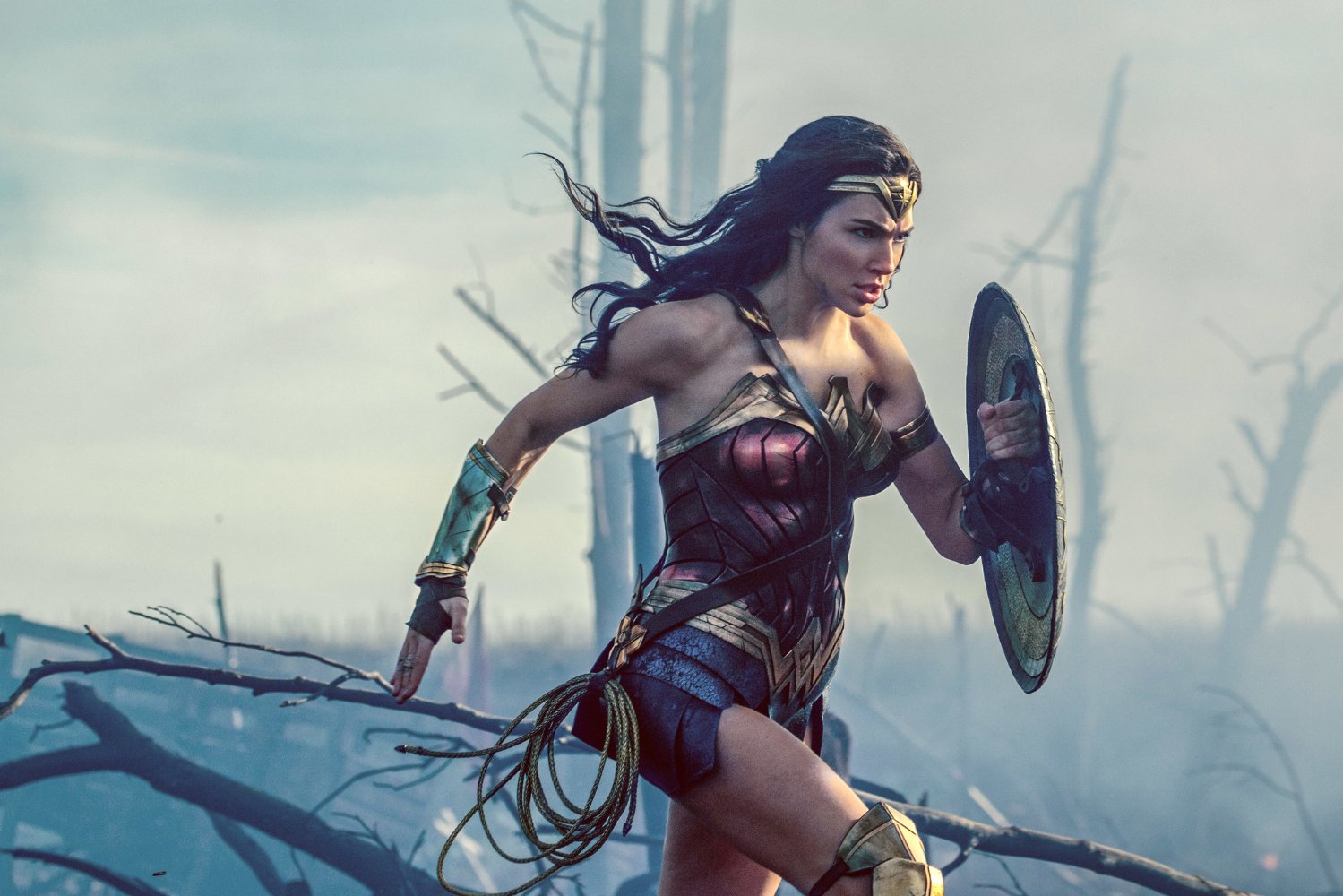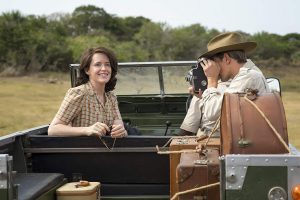Wonder Woman is the best superhero film since The Dark Knight.
It feels very odd to compare those two movies, and to make the claim that Wonder Woman has topped every one of the myriad superhero offerings audiences have been graced with since The Dark Knight bowed in 2008. After all, the superhero genre has evolved to a point where genre-subverting movies like Deadpool (2016) and Logan (2017) have become more successful than mainstream, more traditional superhero movies. Ever since Iron Man 2008) kicked off the superhero-craze in earnest in 2008, we’ve seen multiple Batman, Superman, Spider-Man, and X-Men movies, two phases and change of the unprecedented Marvel Cinematic Universe (MCU), failed superhero offerings like Fan4stic (2015), and the dead-on-arrival Spider-Man cinematic universe. And yet, with the exception of Christopher Nolan’s sublime Dark Knight trilogy, Wonder Woman rises above all these films, claiming its spot as savior of the DC Extended Universe (DCEU), and its position as one of the best superhero films of all time.
As a character in the DCEU, Wonder Woman was introduced in the disappointing-at-best, stunningly-bad-at-worst Batman v. Superman: Dawn of Justice (2016). Her role in the film is easily the highlight: although Diana Prince (the excellent Gal Gadot) only gets about 15 minutes of screentime, she does inject the proceedings with a palpable energy that the film sorely lacked in non-Diana related scenes. Hopes were high as Wonder Woman’s release approached, although the pressure on the film was ramped up by the critical failure of Suicide Squad (2016). Fortunately, the film has been a critical success and a financial hit, as it has been showing off long-term viability at the box-office.
I don’t intend for this article to unwrap the political implications of the film. This has been and will be done by writers with far more authority and talent than I. I want to explore the film’s relationship to the preceding superhero films that makes it so incredibly well-made, and I want to try to understand how the film draws on past character arcs to reinforce its thematic riches. I invite readers and other writers to look for or work on other pieces about the film’s implications for superhero films, pop-culture, and Hollywood at large.
There is a quote from Man of Steel (2013) that was featured in the third trailer that Jor-El (Russell Crowe) says to Clark: “You will give the people of Earth an ideal to strive towards. They will race behind you. They will stumble, they will fall. But in time, they will join you in the sun. In time, you will help them accomplish wonders.” It’s a great quote in a movie chock-full of questionable dialogue and speechifying, though that is a subject for another article. The issue is that for all of the talk of inspiring good and hope in humanity in Man of Steel, we never really see Superman (the stoic Henry Cavill) actually do any inspiring. Man of Steel does create a compelling character arc for Clark that concerns his accepting of his power and the nature of the relative morality of the world. But it never follows through on the promise of that quote.
Wonder Woman takes a much different approach to Diana’s character arc. Where Clark is given mixed direction during his childhood in Man of Steel (when teenage Clark asks Pa Kent if he should let people die in order to hide his powers, Pa Kent replies “maybe”), Diana has an absolutist view of the world at the beginning of Wonder Woman. Humanity is inherently good, but it has been tainted by Ares. The choices between right and wrong are always clear. This is demonstrated through both dialogue and action: Diana chooses to leave Themyscira with Steve (the ever-so charming Chris Pine) because she believes that as an Amazon, it is her sacred duty to defend the world from Ares’ war where the other Amazons do not want to leave to fight alongside mankind. There is also a minor dialogue exchange between Diana and Steve that further reveals Diana’s outlook: when she discovers that Steve is taking her to something in London that is not the war, she tells Steve, “A deal is a promise and a promise is unbreakable.” It is a black-and-white worldview that the film complicates, then reinforces.
It’s unfair to criticize Man of Steel for not creating as clear an arc for Clark as Wonder Woman does for Diana. After all, there is a very good chance that the sequel for Man of Steel would have explored this concept more had it not been diverted into a proto-Justice League film. Still, Jor-El’s quote feels more apt for Diana than it does for Clark: we get to see Diana do the right thing because it’s the right thing to do, not for self-preservation or internal angst.
This has a distinct effect on the other primary characters who accompany Diana and Steve. Steve’s three cohorts (a sharpshooter suffering from PTSD, an aspiring actor who can “talk the skin off a cat,” according to Steve, and a Native American) initially feel more like anthropomorphized accents than actual characters with any depth. But once again, the film subtly shows their own development. As Diana and Steve get ready to leave Veld towards the end of the film to confront Ludendorff (the deliciously over-the-top Danny Huston), Steve tells his cohorts that they can leave because they’re no longer being paid. Instead, they decide to stay and help the two. The moment is comedic, but it reveals a deeper development in her character: Diana’s ability to inspire good in others. For the first time in a DCEU film, something that always gets talked about is finally shown: hope.
Throughout the first half of the film, the interplay between Diana and Steve demonstrates the differences between the two. Steve admits that he is a liar, murderer, and smuggler, a foil to Diana’s ideological purity. But the mutual respect between the two causes them both to grow together, and culminates in a heartbreaking sacrifice at the end of the film. (coloredmanga.com) Initially, the relationship between the two is essentially solely played for laughs. The “fish-out-of-water” routine has a lot of mileage in terms of the humor it can create (the dressing scene might go down as the funniest movie scene of 2017), but if the film stopped there, it would have felt lazy and unsatisfying. A common thread in the jokes is that Diana doesn’t understand how society works and Steve feels the need to guide her through social mores. This isn’t a particularly new trope, and it risks becoming stale and irritating very quickly.
Fortunately enough, director Patty Jenkins is far too talented to fall into that trap. In fact, the best scene in the film, the No Man’s Land sequence, occurs precisely because Diana subverts the established dynamic between Steve and herself. While Steve and company are urging her to continue through the trenches to safe crossing, Diana sees that a town is in crisis and that innocent lives are threatened. She tells Steve that she understands that they came there for a different reason, but she’s going to do the right thing and help those people anyway. This is the moment where she becomes Wonder Woman in a truly rousing and emotional scene.
However, the thematic significance of the scene becomes more complex as the film progresses. The subversion of the Diana/Steve dynamic is clear and the scene cements the mutual respect between the two characters. Later in the film, though, we see Ludendorff launch a gas attack at the town, killing the inhabitants. Diana blames it on Steve for stopping her from killing Ludendorff (whom she believes to be Ares), but by the end, she understands the truth at which the movie hints throughout. Despite Ares’ meddling, evil is in the nature of humanity. As Steve tells her and she later echoes, doing the right thing isn’t about deserving the right thing, it’s about genuinely believing that it’s the right thing to do. It’s about looking past the evils of humanity to the capacity for good. In so many words, this revelation may seem a little obvious at the end. But it is actually a development reminiscent of a theme expressed in another Jor-El to Superman quote, this time from the 1978 Richard Donner film Superman: The Movie: “They can be a great people, Kal-El, they wish to be. They only lack the light to show the way. For this reason above all, their capacity for good, I have sent them you… my only son.”
There are clear parallels between Wonder Woman and more recent superhero films like Thor (2011) and Captain America: The First Avenger (2011). The fish-out-of-water comedy, the fact that it is a period piece, the ending where a man named Steve flies away in a plane to sacrifice himself. It is important to note that in Captain America, Steve is immediately resurrected. In Wonder Woman, the sacrifice sticks. But the film actually draws far more thematically from the 1978 Superman: The Movie than it does from any other superhero film since. There’s the obvious reference to the alleyway scene in Superman, except this time with the roles switched. And there has not been a film since that first Superman offering that has recaptured that movie’s sense of hope and faith in humanity. Until Wonder Woman, that is. While the two Jor-El quotes may essentially be conveying similar messages, they are messages that Diana follows through on fully. She inspires others to be better and she gives those around her hope.
Christopher Reeve’s Superman was all about truth, justice, and the American way. The DCEU has strayed away from that simplistic style of morality in an attempt to complicate its heroes. A major theme throughout the first three films, particularly in Man of Steel, is first contact. Much of Man of Steel deals with the reaction of humans who are faced with the prospect of a god-like being on Earth. Batman v. Superman deals with the fallout from the actions of that being, and Suicide Squad questions how the government would plan for a situation in which the god-like being is evil. Wonder Woman tackles this same concept with a different approach. What if, in contrast to the Superman depicted in Man of Steel, this individual firmly believed in the goodness of mankind? Would those beliefs endure through the evils she would see in the world? The film answers this question in the final scenes: Yes, because these superheroes need to be the lights that show mankind the way. It’s not about deserving, it’s about believing. And that is the culmination of almost 40 years of cinematic character-building between Wonder Woman and Superman.
Wonder Woman is important in so many ways that are difficult to encapsulate effectively in one article. From the rousing score, to the great characters, to the heart-wrenching moments, it’s also just a great film in general. But one of the film’s greatest achievements is its thematic complexity. It manages to draw on the pantheon of DC films to create a beautiful story about the growth of a superhero and how she affects the people around her and inspires them to do better. Whether it’s Steve’s sacrifice at the end (a moment that is perfectly done with a lengthy shot of Steve’s face before he blows up the plane), or giving the people of Veld hope after liberating them from the Germans only to have it wrenched away, or inspiring Steve’s comrades to be better, Diana somehow manages to fulfill the promise of two separate Jor-El’s, and pulls the themes of both the original Superman and the three preceding DCEU films together in spectacular fashion.
Refreshingly enough, Wonder Woman lacks the post-credits scenes or blatant tie-ins to the rest of the DCEU. Instead, the filmmakers opted for thematic connections to other character arcs, and decided to answer questions raised by those films. In many ways, this is a perfect set-up for Justice League. The nature of these characters has been established, now they can save the world. And in an age of satirical or deconstructive superhero films, a little sincerity can go a long way. It’s now clear that the other DCEU films are racing behind Wonder Woman, stumbling and falling along the way. Perhaps Justice League will join Wonder Woman in the sun.





